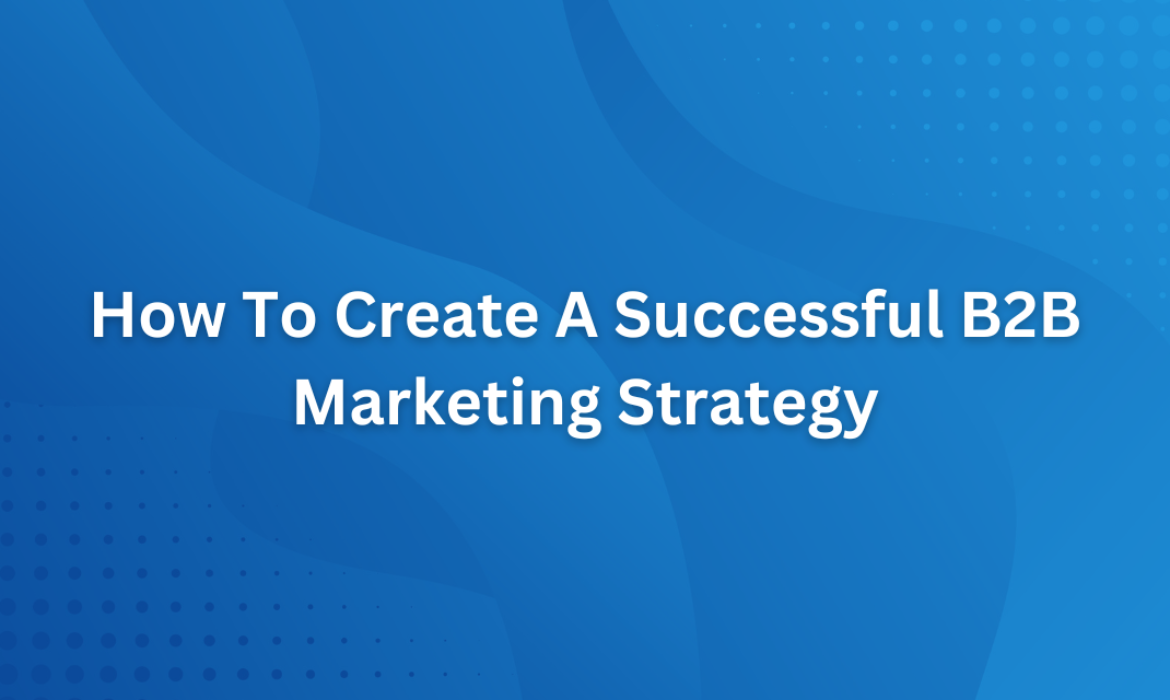Any successful B2B strategy must be geared towards lead generation. It’s why 85% of B2B marketers say their central priority is to generate more leads. But creating a successful B2B marketing strategy isn’t as easy as you might think. There are so many companies that are doing things wrong.
In this guide, you’re going to learn all about how to create a B2B marketing strategy that will grow your company quickly.
Define Your Targets Well
What every B2B marketing strategy has in common is targets that can be defined and refined. It’s impossible to market to everyone at once, so you need to concentrate on your core audience. Anyone else should be secondary to that small core group of people.
Focus your efforts on an individual customer segment. This customer segment will be your image of the perfect customer. It’s your ideal target buyer persona.
Understand Context
Once you discover your target market you need to create content that resonates with them. Content drives forward every type of marketing strategy. The problem is you have to be able to figure out the context of their unique situation. Without understanding what they care about and their purchasing path you’re going to struggle to figure in their minds.
You need to know how your buyers like to buy and what they respond to. This is more complex than you might think. When you’re just starting out you should focus on finding on what their motivations, pain points, and buyer journeys are. This will put you in the best possible position to sway them to making a purchase.
Conversion Goals
A conversion goal is a goal you will set for every piece of content at your disposal. All pieces of content aren’t designed to lead to some sort of purchase. Sometimes a piece of content is designed exclusively to lead to the next piece of content. It’s all part of the purchasing path you’re taking your prospects through.
When setting your conversion goals you need to make them appropriate to whatever stage of the buying process your target audience has reached. For example, at the very top of the funnel, your goal may be just to get them to visit your website.
Conversion goals should be reviewed regularly for leaks. Refine and optimize your conversion goals to get the most out of your efforts.
Pinpoint Contact Points
Engaging with your potential buyers and starting conversations is another priority for you. Remember that the modern buyer wants to have a relationship with any brand they work with. Figure out how you’re going to contact them and how you’re going to engage.
This will largely depend on your findings from earlier. Every type of audience will have their preferred method of contact. For example, you may be talking to them on Skype or through Facebook.
Just make sure that whatever way you choose it’s the one that requires the least amount of effort on their part.
Do You Have a Way to Review Each Stage for Quality?
It’s unlikely that you’ll get everything right on the first attempt. Established companies have B2B strategies that have been refined over many months and years. They have reviewed the numbers they are getting back and have made regular changed to ensure they stay on top of the latest trends.
You need to have a quality control process in place to make sure that each stage of the buying process is working effectively.
This may include regular performance reviews or it could be an ongoing monitoring of the numbers for any adverse trends.
Last Word – An Optimized Process
Preparing your B2B marketing strategy is about optimizing time and time again. Even if you hit upon the best possible outcome this is no guarantee that you’ll have the best strategy six months from now. Your audience is constantly evolving and you need to have the capacity to adapt to that.
Furthermore, when your business grows your needs are going to change. Any strategy you come up with should have the capacity for scaling. Effective scaling will ensure that you can continue to increase revenues while meeting the needs of your target market.
The best time to start with the optimization process is right now. Think about what you’re going to do to meet the needs of your target niche. Consider how you’re going to do it in the most cost-effective way possible.







